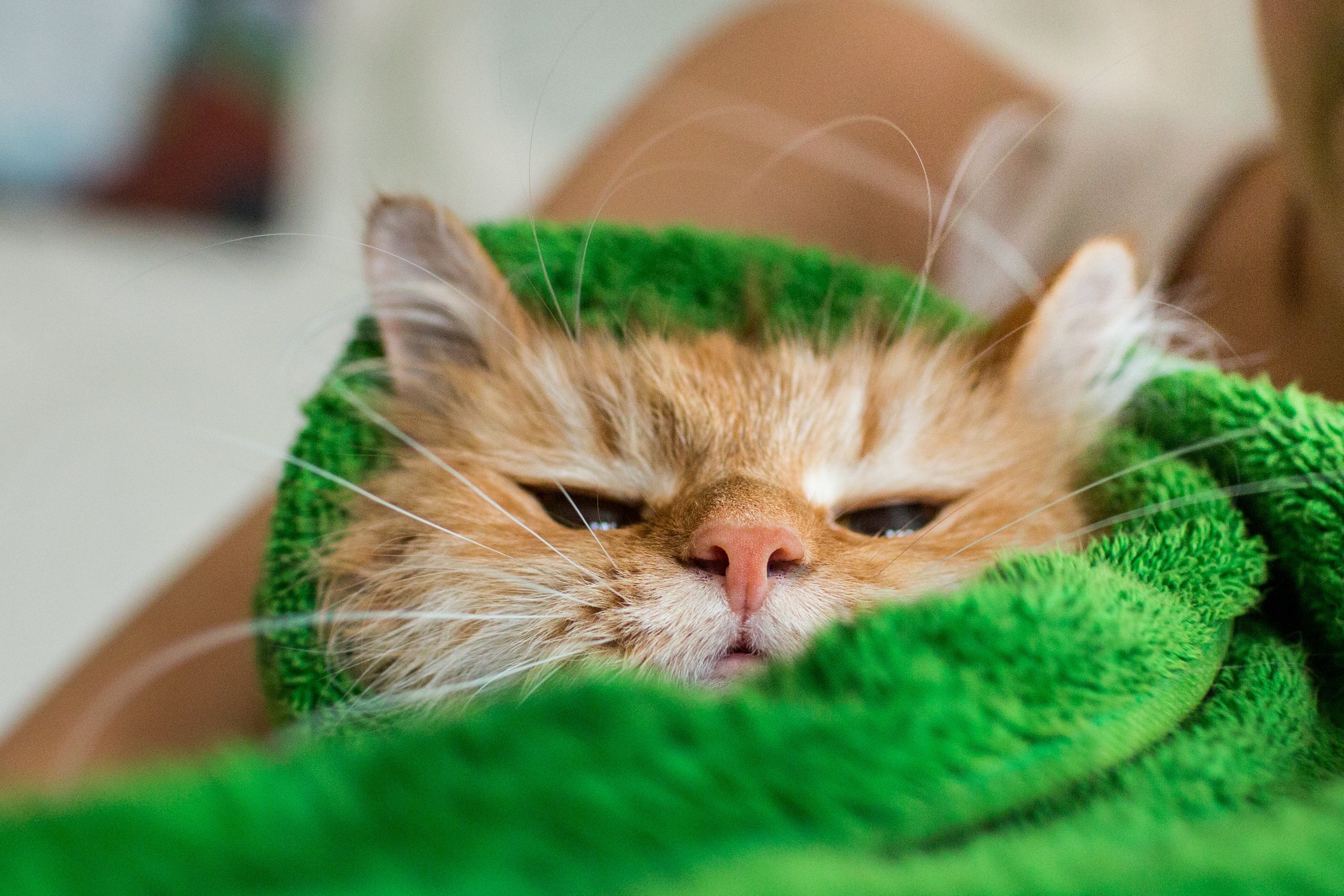lockyfoto|AdobeStock

Safety is the first priority in an emergency situation—and that goes for both you and your cat. If your cat is sick or hurt, or if a natural disaster has occurred, you need to be able to move her without being bitten or scratched. These tips also work if you need to handle a cat that you don’t know, although extreme care should be exercised when considering handling a cat with an unknown vaccine history.
Teeth and claws. Cat bites are notorious for getting infected, so the only good cat bite is one that doesn’t happen. Always have control over your cat’s head so that she can’t twist around if she decides to try to bite. Holding onto an upset cat’s head can be difficult, so the best strategy is to place a buffer to prevent the cat from bending her neck all the way or to block your body.
Don’t forget those four legs, loaded with sharp claws and connected by a very flexible and agile body. The best defense against claws is to wear a protective layer and keep the cat’s legs close to her body.
Towels are your friend. Lightweight, versatile, and present in every home, towels are a staple of cat restraint. Even at the veterinary clinic with more specialized options available, towels are still the go-to tool for handling upset cats.
To make picking up a stressed cat easier, drape the towel over her, head included. A cat that can’t see you approach can’t plan to bite or scratch. Once covered, quickly scoop the cat up, wrapping the edges of the towel under her body. Get one hand on her scruff to have control over her head, and use the other hand and arm to hold her close to your body like you are cradling a baby or holding a football.
Once you have a hold on the cat, you can adjust the towel’s position. The ideal setup is to have the center of the towel under the cat with the ends wrapped snuggly around her body to keep her legs folded close. You can then hold the edges behind her head closed, which both prevents her from snaking a front leg out and gives you some control over your head. An internet search on “kitty burrito restraint” will show some good photos.
If your cat is calm as you start out, you can place her directly on a flat towel and wrap from there. Once wrapped, you can carry her wherever she needs to go.
Whether your cat is wrapped in a towel or in her carrier, covering her head loosely with a towel can decrease stress because she will feel like she is hidden.
Slip leads. A basic slip leash can be helpful for catching a cat, especially if she will let you close but doesn’t want to be touched. Be sure you understand how a slip lead works before using it on a cat.
Make a large loop and carefully drape it over the cat’s head. Then slowly pull on the end to make the loop smaller. Be ready with a towel or cat gloves though, because most cats aren’t leash-trained, so she may panic when she feels pressure on her neck. The leash will limit how far she can go if she bolts, but you want to get a hold of her and loosen the slip leash as quickly as possible to avoid choking her.
Extra tooth protection. Some other tools you can use to protect yourself from a cat’s teeth include cat muzzles, Elizabethan collars, and thick leather gloves.
Cat muzzles are specially designed to fit on a cat’s head, keeping the cat’s eyes covered and mouth mostly closed. Make sure the muzzle fits so that your cat’s nose is visible through the ventilation hole. A cat can potentially still bite with a muzzle on, so be mindful of where your hands are, but the muzzle limits them and covering the eyes can help calm the cat.
Elizabethan collars, affectionately known as the “cone of shame,” leave your cat’s face totally exposed but limit her range to bite. For best results, the E-collar should be longer than your cat’s nose so that she can’t reach around it. An E-collar paired with a towel wrap is an excellent way to carry a fractious cat.
Leather gloves. Thick leather gloves provide some protection while trying to catch an unhappy cat, but they don’t make you invincible. A hard bite usually can still puncture through. They do protect against scratches.
Most vet clinics have elbow-length “cat gloves” to use when handling angry cats. The downside to these gloves is that they limit manual dexterity, which can make holding on to a wriggling cat difficult.
Don’t forget the carrier! Having a cat carrier handy is always a plus in an emergency, especially if your cat has been taught to get in on her own. This allows your cat to be safely confined without unnecessary stress.
Human First-Aid for Cat Scratches
It’s important not to underestimate the chance of infection if you’re bitten or scratched
If you do happen to be bitten or scratched in spite of taking these precautions, it is important to quickly wash any injuries with copious amounts of soap and warm water, and to watch the injury for any signs of swelling, redness, and/or discharge. If any of these symptoms are observed, contact your health professional promptly to avoid secondary infection of the bite or scratch by a bacteria called Bartonella (called Cat Scratch Fever).



